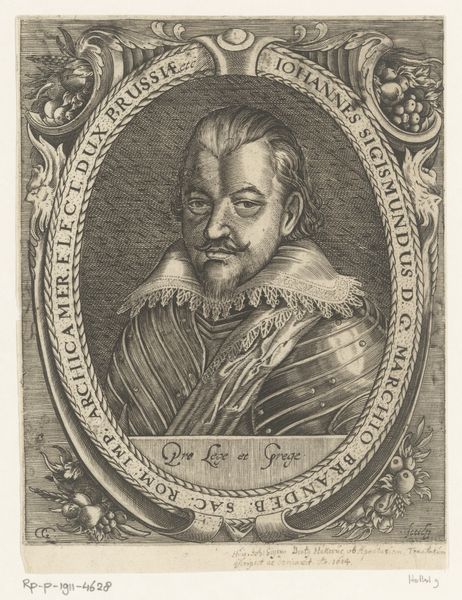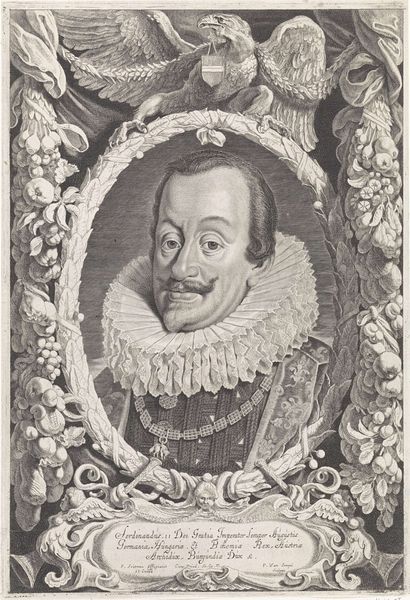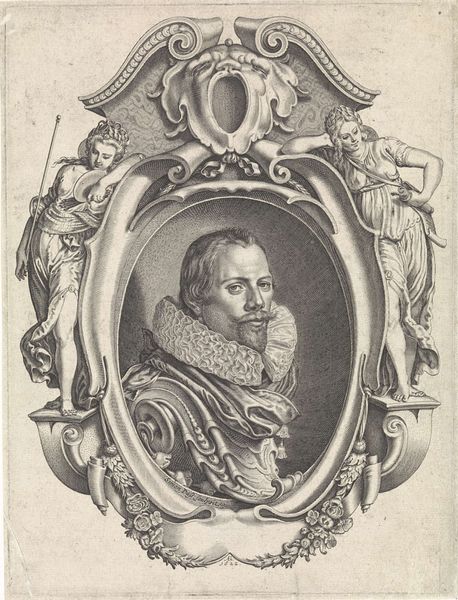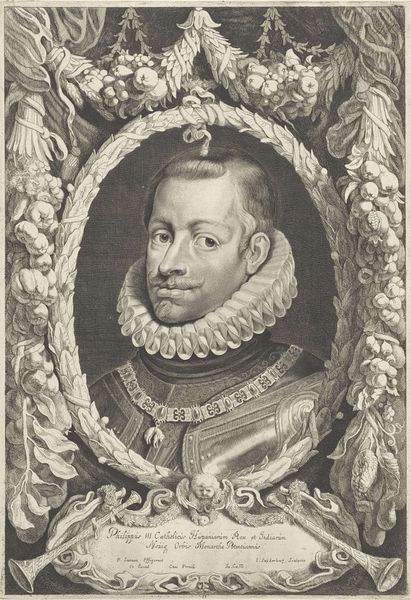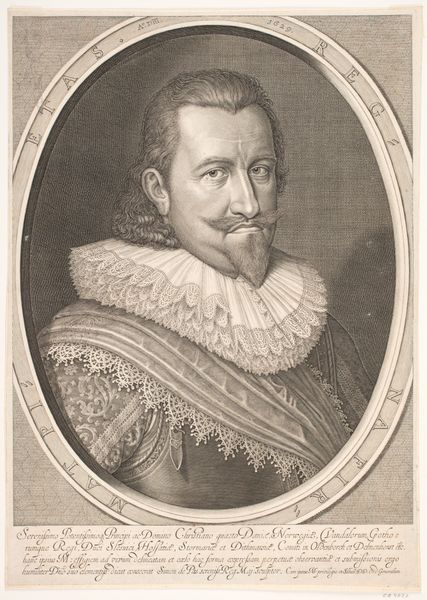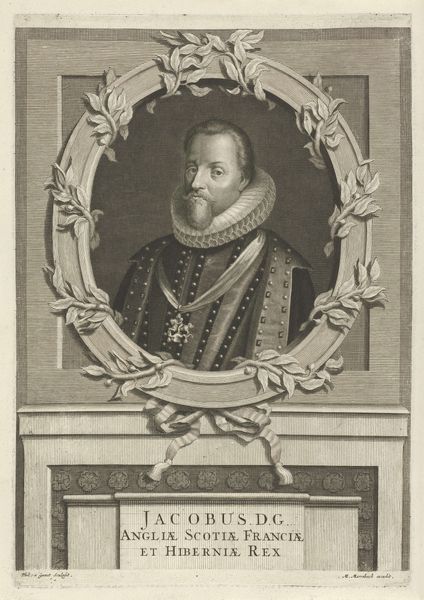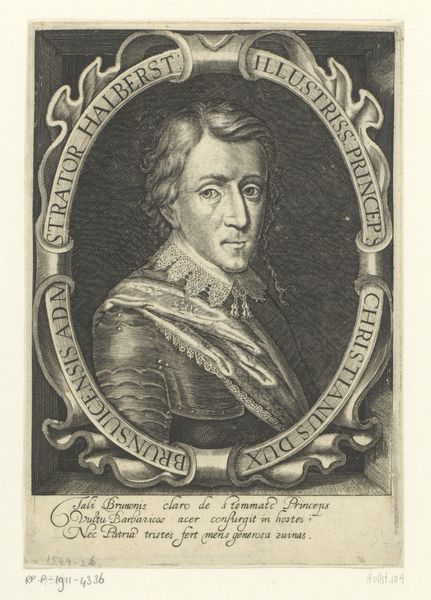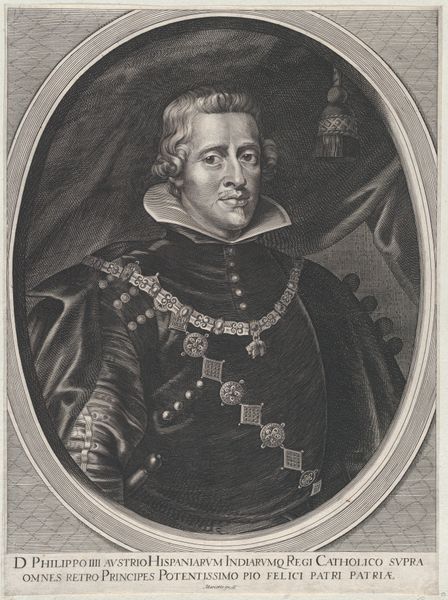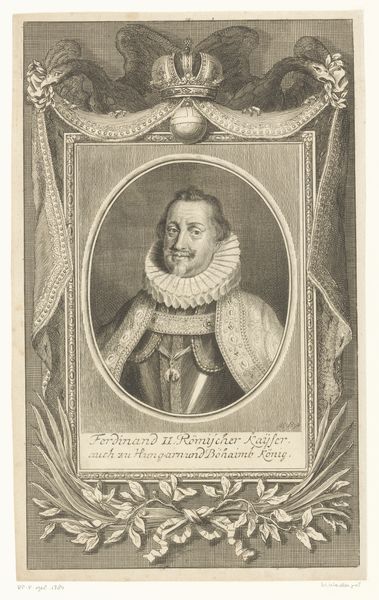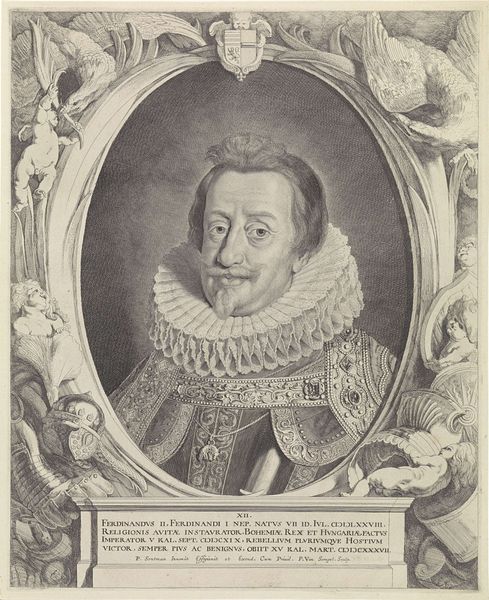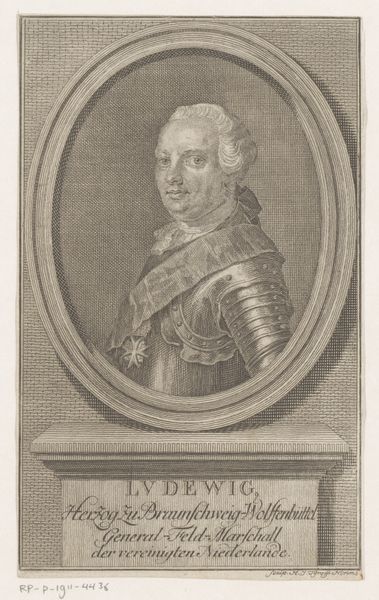
drawing, print, engraving
#
portrait
#
drawing
#
baroque
# print
#
figuration
#
history-painting
#
engraving
Dimensions: Sheet (Trimmed): 15 11/16 × 10 11/16 in. (39.8 × 27.2 cm)
Copyright: Public Domain
Editor: Here we have a print, an engraving actually, titled "Portrait of Philip IV, King of Spain," dating roughly from 1610 to 1657. The detail is really striking, especially in the ornate frame surrounding the king. How do you interpret this work in its historical context? Curator: Well, it’s essential to consider this portrait within the framework of Baroque power structures and the visual language they employed. These weren't just images; they were carefully constructed representations meant to project authority, lineage, and divine right. Look closely – how does the framing, replete with symbols of abundance, contribute to that message? Editor: It definitely feels staged, almost propagandistic. The sheer opulence seems designed to overwhelm. Do you think it reveals anything about the societal values of the time? Curator: Absolutely. The excess isn’t accidental. In Baroque society, visual spectacle was deeply intertwined with social and political control. The portrait uses material wealth to convey not just power, but also Spain's perceived global dominance and its relationship to the colonized Americas from where much of the abundance derived. Does that reading shift your perception of the image? Editor: It does. It makes me think about who this portrait was intended for and how it functioned in shaping their perception of the king. I suppose the print format means it had broader distribution too. Curator: Precisely! The means of production matter. This image was a tool of statecraft, meant to solidify power through controlled visibility. By understanding that, we can see it not just as a portrait but as a carefully orchestrated performance. Editor: That’s given me so much to consider! I see now how crucial it is to look at art as more than just aesthetics; it's really a product of its time and reflective of social and political forces. Curator: Indeed. Keep questioning, keep connecting the visual with the historical, and the stories that artworks tell will only grow richer.
Comments
No comments
Be the first to comment and join the conversation on the ultimate creative platform.
